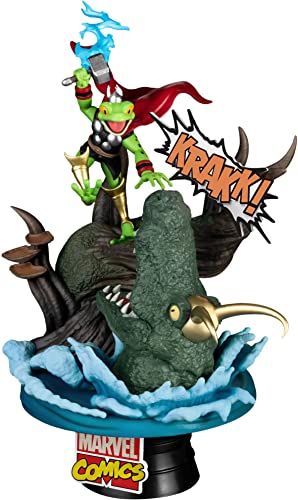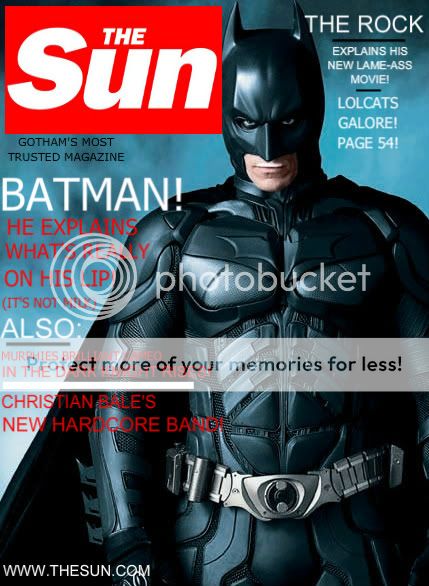The Dark Knight Rises is the sixth collaboration for director Chris Nolan and cinematographer Wally Pfister ASC, and likely to be the last instalment of Nolan’s Batman series. The two met by chance, or maybe it was destiny calling. Prior to the current production, scheduled for a summer 2012 release, their previous films have been Memento (2000), Batman Begins (2005), The Prestige (2006), The Dark Knight (2008), and Inception (2010).
On a budget of $185 million, The Dark Knight grossed over $1billion at the box office. With an estimated budget of $250 million for The Dark Knight Rises, the heat is on to take Batman even greater heights. Ron Prince caught up with Wally Pfister during the UK leg of the new production to discover how they’re going about it.
Q: What are your thoughts on this collaboration with Chris Nolan?
WP: This is the sixth film I’ve made with Chris. Our collaboration began on Memento – we got along together very well, and saw eye to eye – we have similar filmmaking sensibilities. This has only gotten stronger, and here we are on our third Batman film. I think we bring out the best in each other, the way we analyse the material, find new depths, and figure out the best way to put it on the screen.
Q: Batman has been incredibly successful. So how are you going to ‘wow’ the audience this time around?
WP: You’re right, The Dark Knight made, upwards of $1bilion at the box office, so there’s lots of pressure to up the ante, to create a bigger bang than the previous movie. Chris came to me with the project, said it was the third and concluding part of a trilogy. He wanted there to be a bridge between The Dark Knight and this one, so I set about getting a look that is combination of previous films, while also being original. Batman movies have always been dark. So we’re covering some ground from the previous films, but there’s something new in this one. Chris also wanted to ‘up’ action. We’re shooting segments on IMAX again, and this will really elevate the visual aspect of the film.
Q: How about 3D?
WP: We’re not huge fans of 3D, and believe you get more out of IMAX – a more immersive quality for the audience. People really respond to it. It looks big and exciting and people like that in the theatre, rather than a dim 3D experience with glasses. The wonderful thing about this production is that we have shot more IMAX than we did on The Dark Knight, which is groundbreaking. We shot 28 minutes last time on IMAX, but we’re now upwards of 50 minutes on this film.
Q: What can you reveal about the plot?
WP: Not much! It’s the continuing story of Batman, beginning where it left off last time, with Batman on the run and Gotham City facing continual problems. They realise they need Batman back, but there are new villains he has to tackle. What I can say is that Chris has gathered a lovely family ensemble cast – with Christian Bale as Batman/Bruce Wayne again, Gary Oldman back as Commissioner Gordon, Morgan Freeman as Lucius Fox, and Michael Caine as Alfred. He has also reunited Tom Hardy, Marion Cotillard and Joseph Gordon-Levitt who we worked with on Inception.
Q: What was your prep time on the film?
WP: Chris came to me with project at end of last year. I read the script at Christmas, and then had about four months prep, during which time I travelled across the world scouting locations and assembling the crews in different countries. I also spent lots of time back in LA mapping things out with Chris, before we kicked off in India in April this year.
Q: So what have you been doing at Cardington?
WP: Blowing things up, having fun creating devastation, and shooting great action sequences. Cardington has been a destination for us since we built Gotham City here in 2003 for Batman Begins. We’ve been building large sets here ever since, like the rotating hallway in Inception, and the roadway in The Dark Knight. This time around we have a couple of huge sets that you cannot build on any Hollywood stage. Nothing exists anywhere else in the world like this. Being an old airship hangar, it’s 800ft long, 400ft wide with a 180ft roof. You can build up to 100ft high and still have plenty of space for lighting. What we get here is unique.
Q: Where have you been shooting?
WP: The first two days of filming, which we did on IMAX, took place in Jodhpur, Rajasthan in India, where we shot portions of the story out in the desert that tie in with the Cardington sets. Along with shooting at Cardington, we’ve shot portions of Wayne Manor in Nottingham and in Woolerton near Heathrow. We’re visiting Scotland to shot aerial portions near Inverness.
Q: Being away from London, and on location, how have you been viewing dailies?
WP: Chris and I are very old school. We only watch film dailies and I do one-light prints at Technicolor, with John Ensby supervising. We view our dailies in Panavision’s Loc-Pro screening trailer, that Lester Dunton keeps in fantastic condition for us, and we see the film as I have exposed it and intend it to look, with no manipulation.
Q: What are the working hours on the production?
WP: We work pretty solid 12-hour days. Once or twice we go over by an hour. A couple of times we have had 9 or 10 hour days. Chris is very efficient with his time. There is a rehearsal every day at exactly 7am, with all actors and key crew present. If you are there at 6:55am you are late! Actors included!
Q: How do you relax during the shoot?
WP: I generally separate my weekends from my work life, and switch to family and/or music. I play guitar and sing every Saturday and Sunday afternoon at a blues bar in Soho, which I have done, on and off since we shot The Dark Knight here four years ago. Haris Zambarloukos BSC sat in one time, and Joseph Gordon Levitt (portraying John Blake in the current production) has played drums a few times, as well as my focus puller, Bob Hall.
When I look at a shot through a lens, I hear music in my mind. Films, like music, need a sense of rhythm that affects everything from composition to editing. I use the same part of my brain to play a melody that I use to make decisions about how to pan or tilt the camera. It’s about creating a beat or a rhythm.
Q: Which filmstocks are you using, and why?
WP: I only use two stocks – Kodak 5219 and 5207. I like to change the look with the colour and contrast that comes with the lighting rather than using the different charactaristics of the stock. The stock is my control.
Q: Give us a quick run down of the cameras/lenses and lights being used?
WP: As I mentioned before, we are shooting all action sequences in IMAX, 15-perf, 65mm. It is brilliant! We are also shooting 35mm on Panavision Millennium XL cameras with C and E series Anamorphic lenses.
Q: Are you using any new kit/techniques?
WP: There is a bit of new technology that I am really enjoying. ARRI has this brilliant new LED light that you can change the colour temperature and brightness on. We use it every day. We used the new 24k HMIs as well. It just proves that there is no such thing as too bright a light when you are trying to create sunlight.
Q: What’s been the greatest challenge so far on the production?
WP: Keeping up with Chris. He likes to shoot incredibly fast, and a 15 or 20-minute lighting set-up is not unusual. We have to be on our toes at all times.
Q: Please can you give a name-check to your crew?
WP: We have a lovely bunch of guys on the crew. While I brought my gaffer, Cory Geryak, and my A-camera/focus puller, Bob Hall, who have both been with me for nearly 20 year, in from LA, our London gaffer Ruben Garrett is just a gem. His crew are all great technicians and wonderful guys. The camera department is rounded out with Brad Larner, who has worked with me since Batman Begins, Ian Coffey, Ben Adefarasin and Sally Wright. Together, they are a great, great crew.
Q: Where is the production off too next when you leave the UK?
WP: Well, we’re off to Scotland next… then Pittsburgh... then Warner Bros. Studios in Burbank, Los Angeles… then New York. It’s a crazy, mad schedule. We will finish in mid-November.
Q: How has the catering been?
WP: We have wonderful caterers who work with us up at our stage in Cardington, Jim and Mike. They have been with us since Batman Begins in 2003, and they are proper chefs serving fantastic food. Fish and chips on Fridays is the highlight for myself, and our producer Emma Thomas.
Q: Being a regular shooter in Britain, what have you learnt?
WP: I learned what a Richard Burton is. I learned what a laugh and a joke are. I even learned what a Richard The Third is!
Q: What are your thoughts about becoming a member of the BSC?
WP: I am thrilled to become a BSC member – it is an amazing honour. It seems I have spent half of the last seven years shooting and playing in London, and my wife and children love it here as well. There are so many wonderful BSC members that I have met over the time. I’m thrilled.































